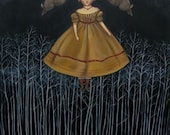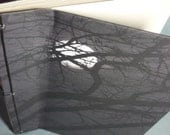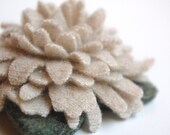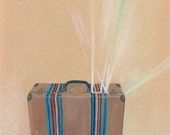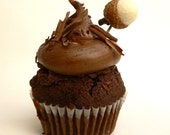There are seemingly endless varieties of giclée substrates to print on: watercolor and photo paper, canvas, adhesive paper, fabric, signage material such as vinyl and backlight media. There are many important factors to consider when choosing a substrate.
Not all substrates are equal. Many brands sell similar substrates in various levels of quality and use terms such as "museum quality" or "artist grade". Every type of substrate should provide a specifications sheet. This sheet should list a brief description of the substrate, its applications and proper conditions of use and storage. You should also find a list of the technical specifications. This list may or may not include: weight, thickness, surface finish, whiteness, opacity, OBA content, pH-Value, acid free, water resistance, rag content and/or calcium carbonate buffered.
Paper Weight and Thickness
Paper weight is often confused with paper thickness. In reality, paper weight is density or volume and is measured in grams per square meter (gsm). Paper thickness is measured in thousandths of an inch.
When choosing a paper consider the weight/thickness for handling purposes. A lighter paper will crimp more easily. On the other hand, check your printer's specifications for the maximum paper weight in order to avoid paper jams and printhead issues.
Paper Finish
Surface finish is a matter of preference and is different with every substrate. Many paper companies sell letter-size sample sheets. This is a good investment.
Optical Brighteners
Optical brightener agents (OBA) make paper look bright white and they can be great for punching bright colors, but OBAs can cause premature yellowing. Substrates can have varying amounts of OBAs. If possible, avoid OBAs.
Acid Content
If you want your print to last, choose a paper that is 100% rag. Paper that is 100% rag is made of cotton, opposed to wood pulp, which may have a high concentration of acid.
The substrate you print on should also be acid-free. Your specifications sheet might tell the pH-value, which if neutral, should be between 7 and 9.5. Calcium carbonate is sometimes added during the paper making process to make the paper pH-neutral. It has the added effect of neutralizing other acids in the environment that may cause the paper to become acidic over time.
Printer and Paper Compatibility
You may have found the perfect substrate, but don’t bother using it if it isn't compatible with your printer. It is important to do your research before ever testing the first sheet. Not only is compatibility important for optimal longevity and print quality, but for the life of your printer. If you put a substrate in your machine it isn’t meant to have, you could ruin your printheads and/or spray ink all over the inside of your printer.
Up next, Part 4 Digital Files & Photography.





















